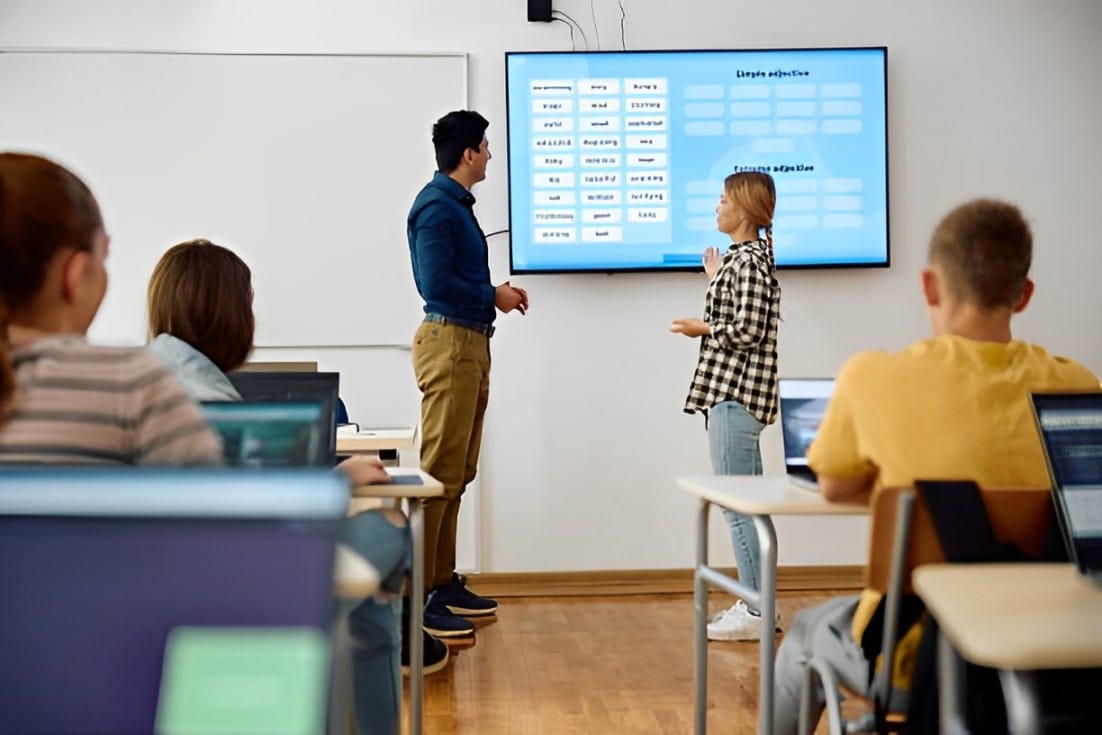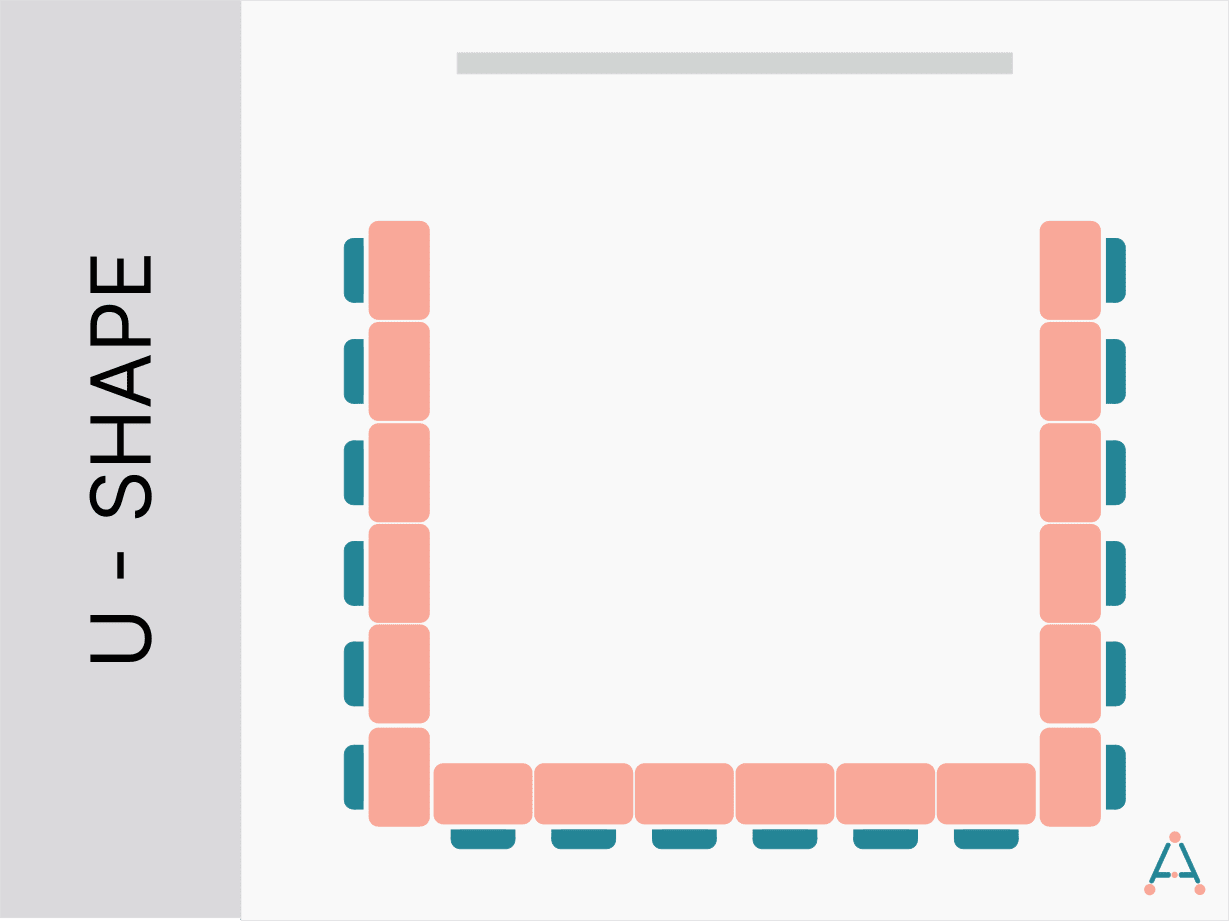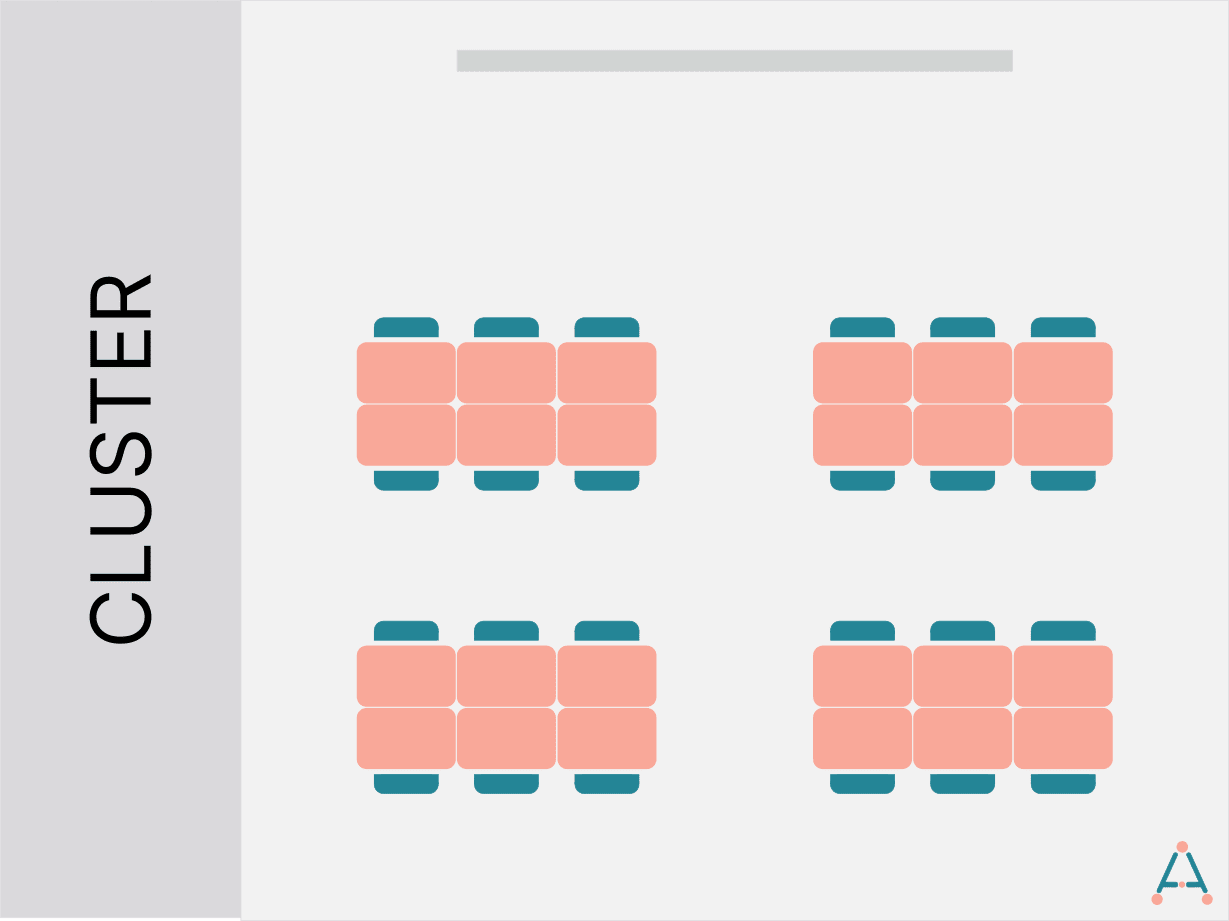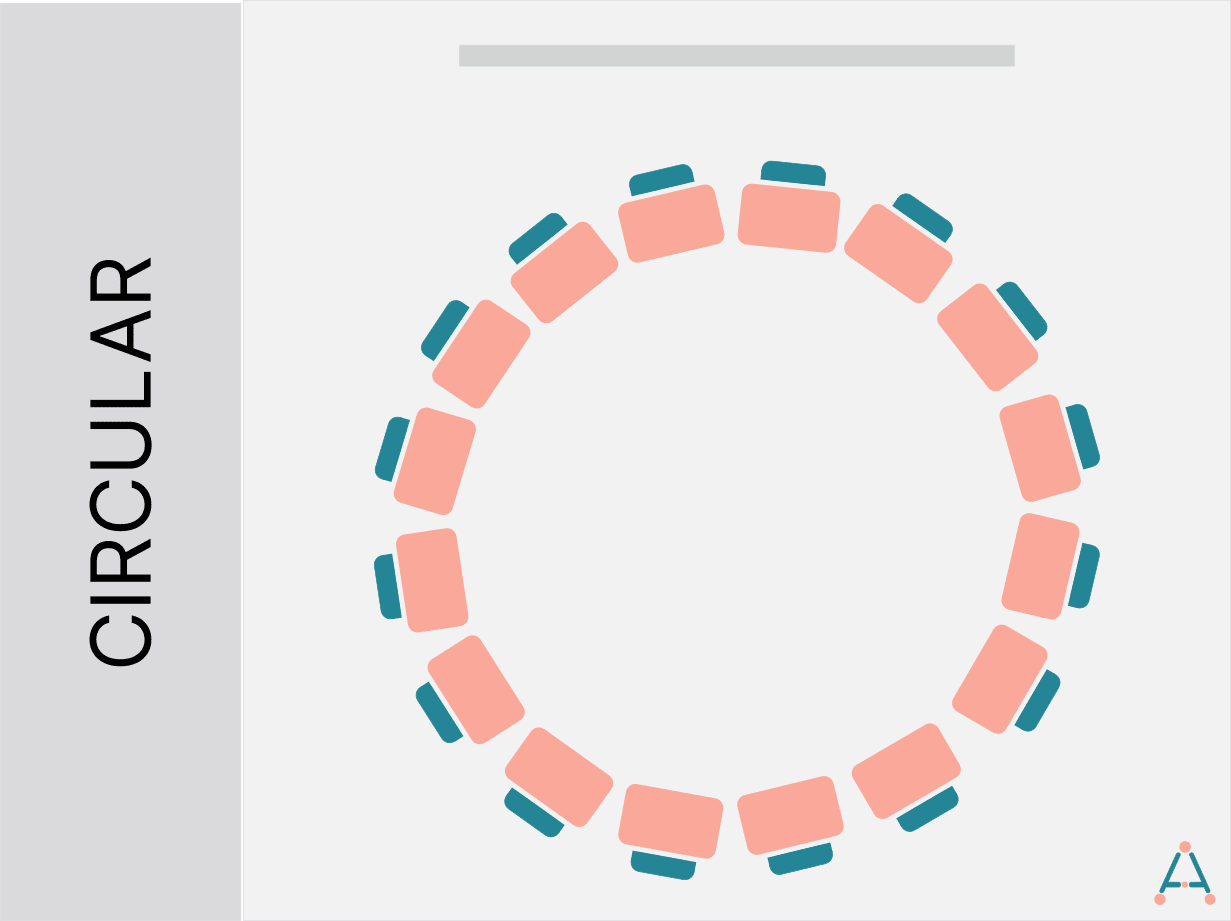Enhancing Student Learning Via Optimized Classroom Layout
The design of a classroom significantly impacts student learning, engagement, and overall academic performance.

The design of a classroom significantly impacts student learning, engagement, and overall academic performance. Recent studies emphasize that an optimized classroom layout enhances student concentration and participation while promoting better teacher-student interactions. This article explores various aspects of classroom design that have been shown to contribute to an improved learning environment.
💡 Lessons learnt: When the environment encourages learning, then learning is inevitable.
Physical Environment
The learning space is the core of a student's educational experience. Like the learning space, many factors, such as lighting, color, and temperature, play a central role in creating a conducive atmosphere for learning. Studies have found these factors regarding the classroom environment can influence student performance by up to 25%. Optimized lighting, especially that from natural sources, enhances student achievement and well-being (Barrett et al., 2015).
Well-designed furniture also helps students stay healthy, think clearly, and feel comfortable, which improves concentration and academic performance. (Fisher, 2001).
Seating Arrangements
Seating arrangements in classrooms affect the dynamics of student interaction, collaboration, and learning outcomes. Different seating configurations, such as traditional rows, clusters, and U-shapes help facilitate various teaching methods and learning activities.
Traditional Rows: Traditional row seating is effective for individual tasks, reducing distractions and improving student focus, particularly benefiting disruptive students (Babadjanova, 2020). It minimizes off-task behaviors such as inappropriate talking and out-of-seat activities (Simmons et al., 2015).

U-Shape (Horseshoe) Arrangement: U-shape seating facilitates better teacher-student interaction and is ideal for discussions and presentations. It helps maintain students' concentration and promotes a positive classroom environment (Ibiloye, 2021). This arrangement also supports student engagement in cooperative learning activities (Yang et al., 2021).

Cluster (Pod-Community) Arrangement: Cluster seating is particularly effective in promoting interactive and cooperative learning environments by allowing students to work closely in groups (Ibiloye, 2021). This setting also encourages communication and engagement among students (Norazman et al., 2019).

Circular Arrangement: Circular seating arrangements foster a sense of belonging and community within the classroom, enhancing student participation and emotional well-being. It helps expand the action zone, promoting attention and interest in learning activities (Falout, 2014).

Teachers can adapt the classroom layout to suit different lessons, thereby enhancing the learning experience and catering to diverse curricula and student needs (Fernandez, 2011).
Acoustics
The presence of good acoustic conditions facilitates the reduction of background noise, improving the clarity of speech, besides ensuring that students are in a position to hear and understand instructions in a stress-free environment.
Sound materials and the cheerful design of the classrooms considerably boost the learners' capacity to hear and understand what is said in class (Shield & Dockrell, 2008). High levels of background noise raise the cognitive load, and students become more stressed with reduced concentration levels. Effective sound control reduces these distractions significantly and, therefore, enables the students to conduct their tasks well (Klatte et al., 2013).
An extensive review by the Acoustical Society of America indicates that improved acoustic conditions are directly related to better student academic performance. Students show higher test scores and average academic achievement when classrooms are acoustically optimized versus students in acoustically poor classrooms (ASA, 2015).
Technology Integration
Modern educational tools and resources enhance teaching and learning experiences, making lessons more interactive and engaging. Using interactive whiteboards in classrooms significantly improves student engagement and learning outcomes. These tools allow for dynamic presentations, interactive activities, and immediate feedback, which helps improve understanding and retention of information (Schmid, 2008).
Blended learning combines traditional face-to-face instruction with online learning activities. Horn and Staker describe blended learning as an effective approach to providing students with a more flexible and comprehensive educational experience. This allows students to benefit from the structure and social interaction of in-person classes while also taking advantage of the vast resources available digitally.
Technology integration also includes the use of classroom management software, which helps teachers organize lessons, track student progress, and communicate with students and parents. Such software can streamline administrative tasks, allowing teachers to focus more on instruction. It provides real-time data on student performance, enabling timely interventions and support.

Adiutor
Adiutor means "helper" - we do just that, by taking a load of your school administration and helping you focus on what matters most: the kids.
References
- Barrett, P., Davies, F., Zhang, Y., & Barrett, L. (2015). The impact of classroom design on pupils' learning: Final results of a holistic, multi-level analysis. Building and Environment, 89, 118-133.
- Fisher, K. (2001). Ergonomics and the classroom environment: A study of ergonomic factors in school settings. Journal of School Health, 71(5), 194-199.
- Tanner, C. K. (2009). Effects of school design on student outcomes. Journal of Educational Administration, 47(3), 381-399.
- Marx, A., Fuhrer, U., & Hartig, T. (2000). Effects of classroom seating arrangements on children's question-asking. Learning Environments Research, 3(3), 249-263.
- Wannarka, R., & Ruhl, K. (2008). Seating arrangements that promote positive academic and behavioural outcomes: A review of empirical research. Support for Learning, 23(2), 89-93.
- Fernandez, M. (2011). Flexible seating and its impact on student engagement. Journal of Classroom Interaction, 46(2), 26-32.
- Shield, B. M., & Dockrell, J. E. (2008). The effects of noise on children at school: A review. Building Acoustics, 15(2), 133-152.
- Klatte, M., Bergström, K., & Lachmann, T. (2013). Does noise affect learning? A short review on noise effects on cognitive performance in children. Frontiers in Psychology, 4, 578.
- Acoustical Society of America (ASA). (2015). Classroom acoustics: A resource for creating learning environments with desirable listening conditions. Journal of the Acoustical Society of America, 138(4), 2379.
- Küller, R., Ballal, S., Laike, T., Mikellides, B., & Tonello, G. (2006). The impact of light and colour on psychological mood: A cross-cultural study of indoor work environments. Ergonomics, 49(14), 1496-1507.
- Barrett, P., Zhang, Y., Moffat, J., & Kobbacy, K. (2013). A holistic, multi-level analysis identifying the impact of classroom design on pupils' learning. Building and Environment, 59, 678-689.
- Higgins, S., Hall, E., Wall, K., Woolner, P., & McCaughey, C. (2005). The impact of school environments: A literature review. The Design Council.
- Schmid, E. C. (2008). Potential pedagogical benefits and drawbacks of multimedia use in the English language classroom equipped with interactive whiteboard technology. Computers & Education, 51(4), 1553-1568.
- Sung, Y. T., Chang, K. E., & Liu, T. C. (2016). The effects of integrating mobile devices with teaching and learning on students' learning performance: A meta-analysis and research synthesis. Computers & Education, 94, 252-275.
- Babadjanova, U. B. (2020). Different Student Groupings and Seating Arrangements. Journal of Critical Reviews.
- Simmons, K. D., Carpenter, L., Crenshaw, S., & Hinton, V. (2015). Exploration of Classroom Seating Arrangement and Student Behavior in a Second Grade Classroom. Georgia Educational Researcher.
- Ibiloye, A. C. (2021). Considering Students Seating and Three Effective Classroom Seats Arrangements
- Yang, X., Zhou, X., & Hu, J. (2021). Students’ preferences for seating arrangements and their engagement in cooperative learning activities in college English blended learning classrooms in higher education. Higher Education Research & Development.
- Norazman, N., Ismail, A. H., Ja’afar, N., & Khoiry, M. A. (2019). A Review of Seating Arrangements Towards the 21st Century Classroom Approach in Schools. Malaysian Journal of Sustainable Environment.
- Falout, J. (2014). Circular seating arrangements: Approaching the social crux in language classrooms. Studies in Second Language Learning and Teaching.
